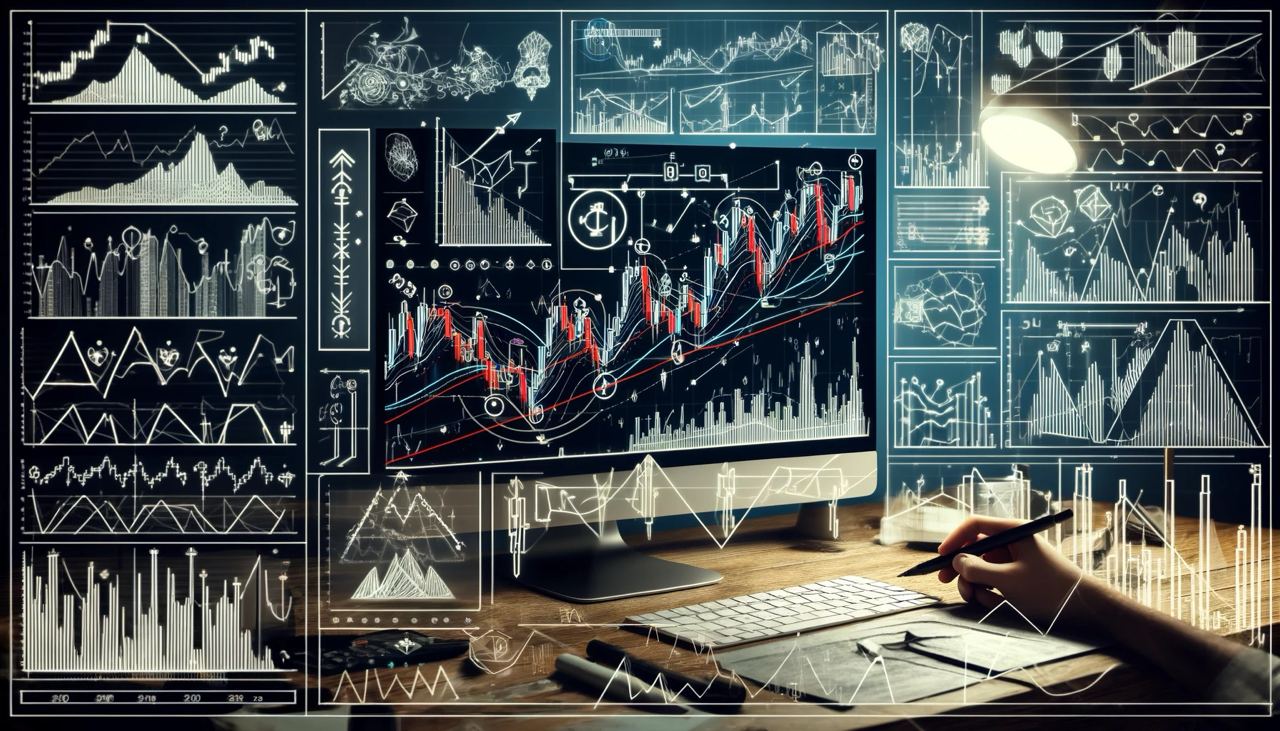Learn Trading for Free and Without Registration
An Online Glossary to Study Trading Independently
Forex Market Graphical Analysis
Graphical Analysis of the Forex Market: Key Principles and Tools

Graphical analysis is a branch of technical analysis focused on interpreting price charts. This method is considered one of the most accessible for beginner traders, as it requires minimal skills: drawing lines and identifying known patterns. The main task of a trader is to recognize a pattern, confirm its presence, and follow predefined trading rules.
There are two main approaches:
- Drawing support and resistance levels. These lines can be horizontal or sloped and are drawn through key price points.
- Identifying patterns. This approach requires observation skills. Beginners are encouraged to consult pattern reference charts at first, but over time, recognizing patterns becomes more intuitive.
Both strategies are easy to implement using tools available in any trading terminal. They are universal and can be applied to various markets, including forex, stock, commodity, and raw material markets. Graphical analysis is often the first step in learning how financial markets work due to its simplicity and clarity. Let’s explore its key elements.
Trend Line
A trend line is a fundamental tool in graphical analysis, used to determine market direction. Building a trend line involves identifying three key points:
- The first point is a pivot point that initiates the analysis, even if the previous trend hasn’t been fully confirmed as complete.
- The second point confirms a reversal and sets the trend direction.
- The third point must remain below the first in a downtrend or above it in an uptrend to validate the new trend.
The trend line may intersect with price multiple times, serving as dynamic support or resistance. It can be constructed across different timeframes, reflecting trends of various scales. Beginners are advised to draw trend lines manually to gain a better understanding, although there are indicators that can automate this process.
Channel Construction
A channel defines dynamic support and resistance levels, forming boundaries for price movement. It is constructed as follows:
- Draw a trend line as described above.
- Add a parallel line through the second key point to form the opposite boundary of the channel.
Channels are often combined with other methods, such as wave analysis. An enhanced version of this method is the Fibonacci channel, which includes additional lines for a more detailed analysis.
Horizontal Levels
Horizontal levels indicate price zones where significant market interest is present, creating support or resistance. These levels are essential for analysis:
- On daily charts, they form a foundation for trading on shorter timeframes.
- They signal potential obstacles for further price movement.
Horizontal levels are widely used in trading strategies like Price Action.
Patterns and Models
Patterns are price formations that fall into two main categories:
- Reversal patterns. Indicate a potential trend reversal. Examples include "Head and Shoulders" and "Double Top."
- Continuation patterns. Highlight temporary corrections within an ongoing trend. Examples include "Flags" and "Triangles."
Each pattern has its own interpretation rules and trading level setups, making them a powerful tool in a trader’s arsenal.
Advantages and Disadvantages of Graphical Analysis
Advantages:
- Ease of learning. Suitable for beginners due to its accessible principles and universal application.
- Clear algorithms. Patterns come with straightforward rules, including stop-loss and take-profit placement.
- Attractive trading parameters. High potential profitability based on mathematically sound strategies.
Disadvantages:
- Limited effectiveness on small timeframes. Graphical analysis is less reliable on shorter intervals.
- Sensitivity to distortions. Slight changes in pattern structure can confuse beginners.
Conclusion
Graphical analysis remains a universal and highly effective tool for studying any financial market. Its simplicity, visual clarity, and well-defined algorithms make it ideal for beginners and a valuable resource for experienced traders.
This article provides a general overview of graphical analysis. For a more detailed exploration of its methods and strategies, visit our "Courses" section. Choose the course that suits your needs and begin an in-depth study of this topic to master the art of market analysis at a professional level.


